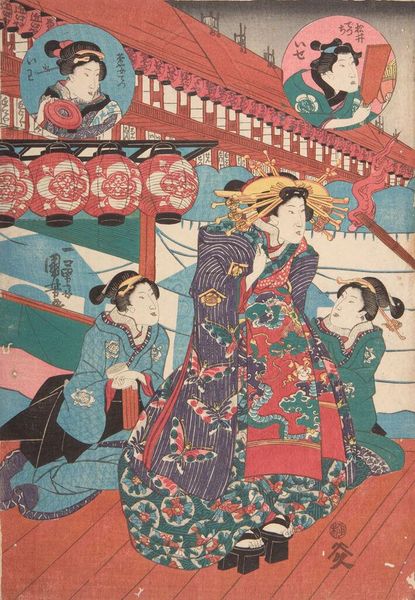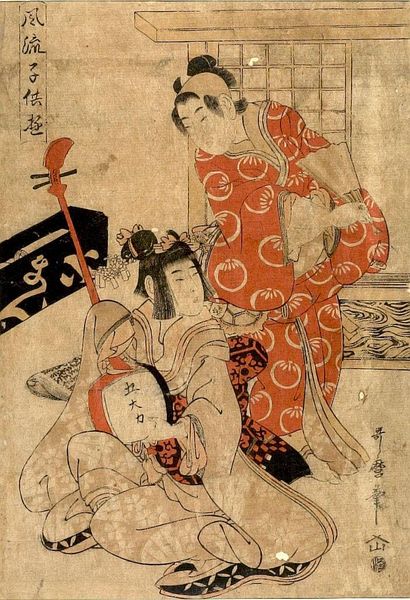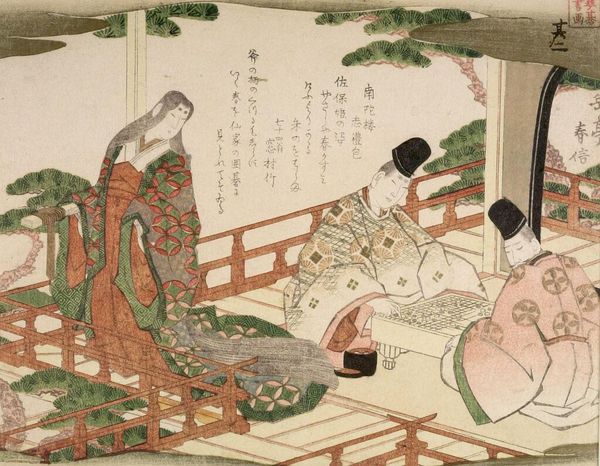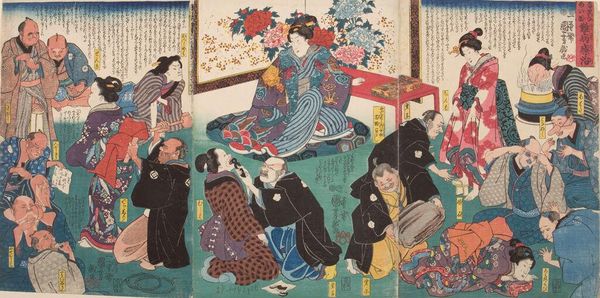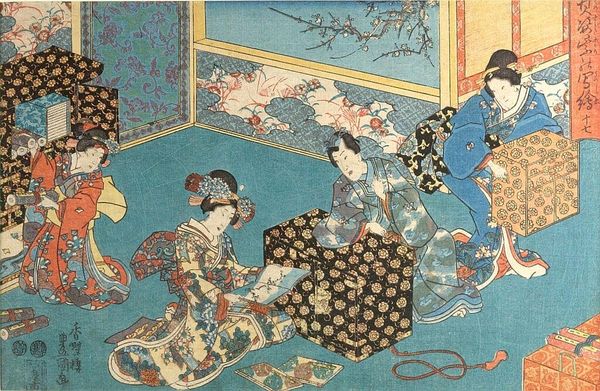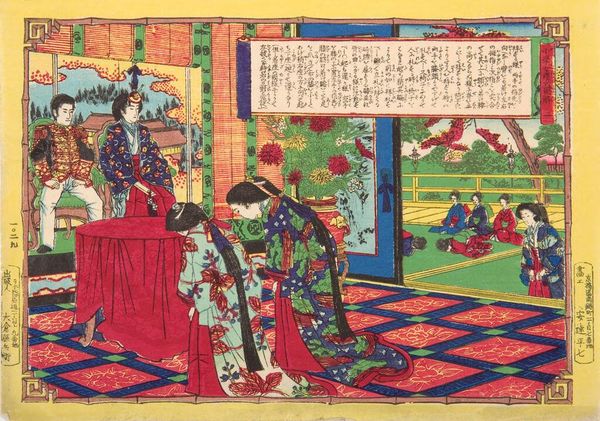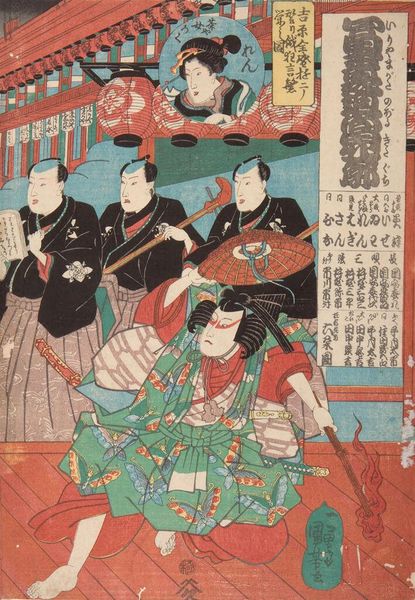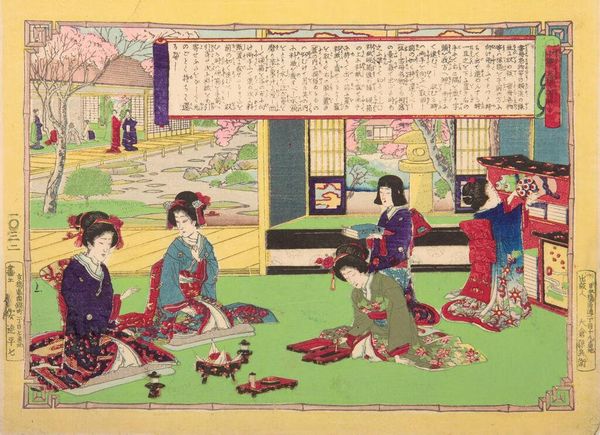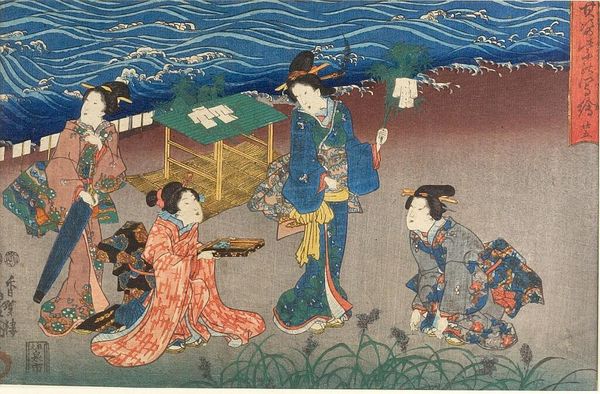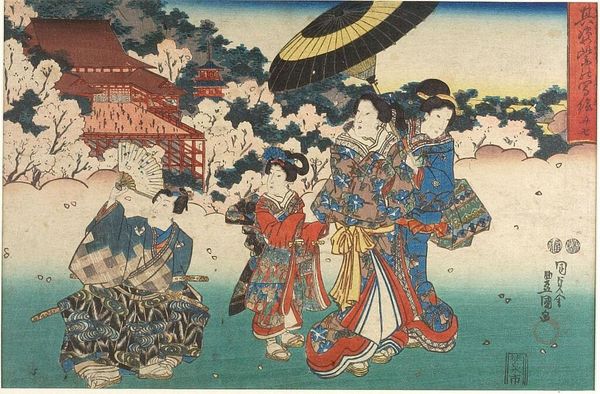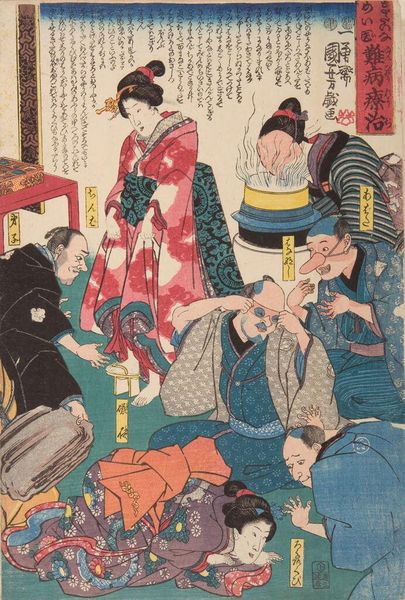
Copyright: Public Domain: Artvee
Curator: Looking at this print, “Tokugawa Ietsugu Playing at Archery,” a work produced around 1875 by Tsukioka Yoshitoshi, I am immediately struck by how it simultaneously conveys youthful playfulness and inherent violence. What’s your take? Editor: The scene appears as a layered critique on power, the ruling class’s unchecked behavior. A fallen figure is riddled with arrows, set against the opulent, but rigid interiors that highlight themes of privilege, recklessness, and a total disconnect. Curator: Visually, the arrows piercing the prone figure certainly jolt us. Historically, archery symbolized discipline and virtue for the samurai class. Yoshitoshi’s portrayal here upends that traditional symbolism. Editor: Exactly, and the image’s structure almost reinforces these contradictions. On one side, you have a sense of domestic disarray or play, yet balanced with other figures watching indifferently on the other side. They signify society’s compliance with displays of power. There’s a potent feminist read here too; note how this visual story reinforces narratives of subjugation and silent compliance. Curator: What resonates for me is the depiction of the "floating world," a Ukiyo-e theme emphasizing fleeting beauty and transient pleasures—we can’t miss how the bright color and patterns serve as an odd, and haunting, backdrop to a scene filled with real suffering, don't you think? This adds a layer of irony, maybe of moral ambivalence. Editor: I appreciate you pointing this out. Yet I think we should remember it is vital that we unpack the relationship of beauty to the harsh truths it may mask, it can function almost like a method to render some brutal truths palatable to the viewer. That figure sprawled and pierced on the red carpet invites questions regarding consent and structural violence, and I am wondering why is she lying prone to play?. Curator: True, art never exists in a vacuum. This piece uses conventional beauty to ask uncomfortable, yet essential, questions. What at first glance might feel like a simple genre scene becomes an invitation to probe darker socio-political depths. Editor: Precisely. Yoshitoshi compels us to confront both the historical specificities and how they inform modern contexts—where power structures frequently perpetuate unequal dynamics and hidden oppressions, this speaks still. Curator: The print certainly is far from a simple record of entertainment! The beauty in "Tokugawa Ietsugu Playing at Archery" leads into much wider fields of view of art and memory. Editor: For me, Yoshitoshi's art is very critical to understanding the history of abuses. Its continuing existence as a historical object demands that the audience keep discussing how art reflects reality while simultaneously challenging the foundations and the dynamics it portrays.
Comments
No comments
Be the first to comment and join the conversation on the ultimate creative platform.
